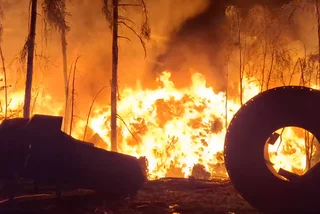In July, four planets will be visible to the naked eye at the same time, along with nightly glowing clouds and the Milky Way. Venus, Mars, Jupiter, and Saturn can be seen early in the morning. At the end of the month, the transit of Jupiter's two moons will also be visible, but you will need a small telescope to observe this phenomenon.
Pavel Suchan, press secretary of the Astronomical Institute of the Czech Academy of Sciences (AV ČR), told ČTK that currently Venus, Mars, Jupiter, and Saturn can be seen before dawn. Saturn appears first, followed by Jupiter, Mars, and Venus, which is popularly called the Morning Star. This is also the best time to see Saturn, which will soon be in the sky all night.
PARTNER ARTICLE
This month's full moon, called the "Buck Moon" or "Thunder Moon," will occur on July 13. The moon will also reach perigee, the closest point in its orbit to Earth, at 5:06 a.m. that day, creating a "supermoon" — a full moon that appears slightly larger than normal. This month's full moon will be the biggest and brightest of 2022.
You can catch it before it sets at 3:55 a.m. on July 13, or wait for it the rise in the evening at 9:38 p.m.
"We are also still looking out for nocturnal luminous clouds, which is a cloud cover that is 85 kilometers above the Earth's surface — the highest cloud cover that we can observe," Suchan said.
"It's like a silver web. It occurs roughly an hour and a half after sunset or an hour and a half before sunrise," Suchan said. The phenomenon is associated with the weeks around the summer solstice. "The sun only sets very shallowly below the horizon, and that means it shines high into the atmosphere at that time and illuminates the cloud cover," he explained. Nocturnal luminous clouds appear irregularly.
On the morning of July 26, there will be a simultaneous transit of two of Jupiter's moons. However, people need at least strong binoculars or a small telescope for this experience.
"The moons are visible through binoculars. when they pass in front of the planet, we will see them as black dots. We can also observe the entry of the moon in front of the planet, or, when there is an eclipse, behind the planet," Suchan described. He recommended using a tripod to hold the binoculars. "Otherwise it shakes terribly, and you can't see anything there," he added.
In summer, the Milky Way towers high above the horizon. "It passes through the typical summer constellations, such as the Cygnus and Aquila. But they can only be seen beautifully where there is less light pollution," Suchan said. The best conditions for observing the Milky Way are in summer and winter.
The maximum of the Perseid meteor shower falls on the night of Aug. 12–13 this year, but at that time the conditions for observing it will be poor. "There will be a full moon the night before," Suchan said. The Perseids are active between July 17 and Aug. 24, with meteors or shooting stars coming from the direction of the constellation Perseus.












 Reading time: 2 minutes
Reading time: 2 minutes 






























